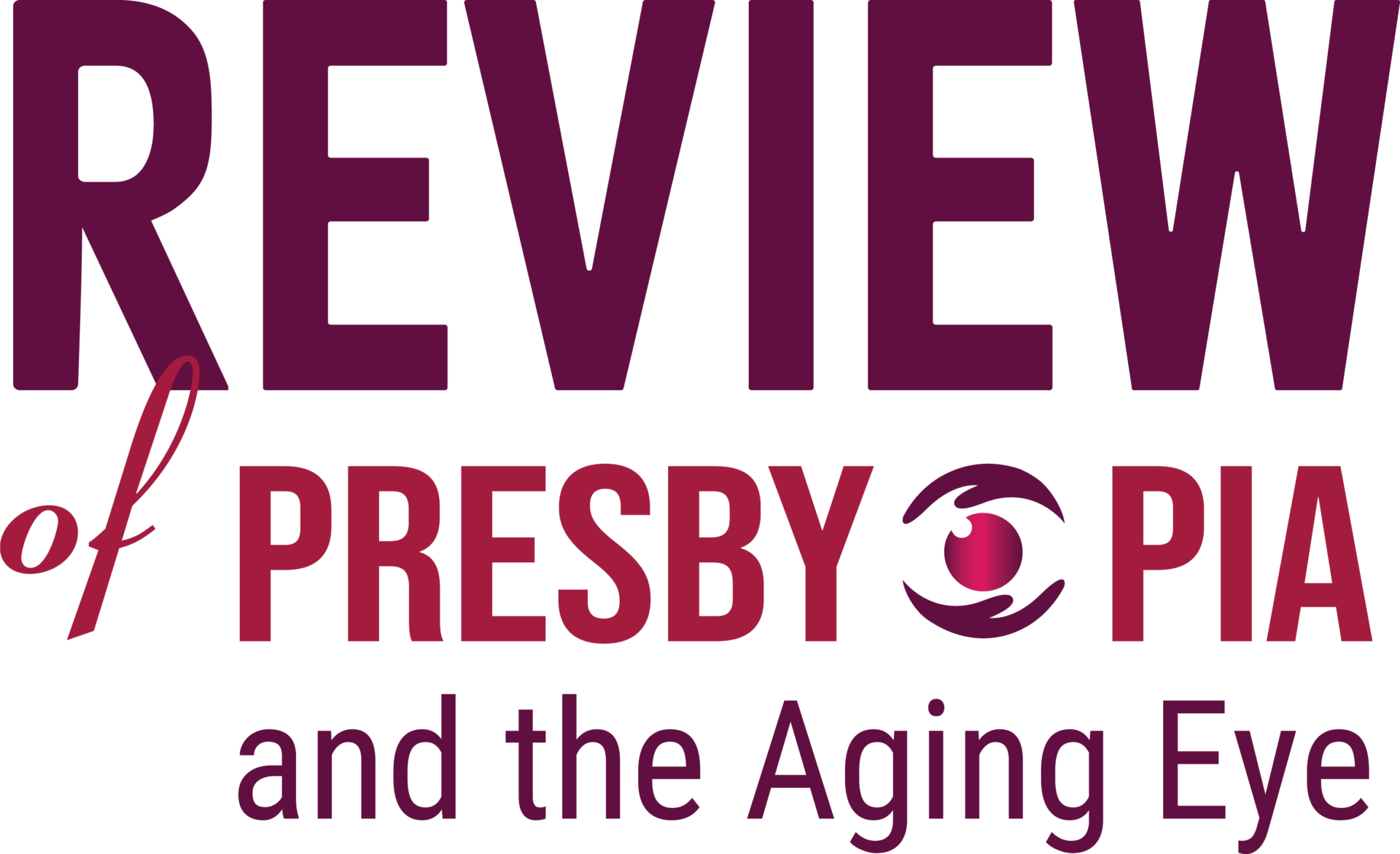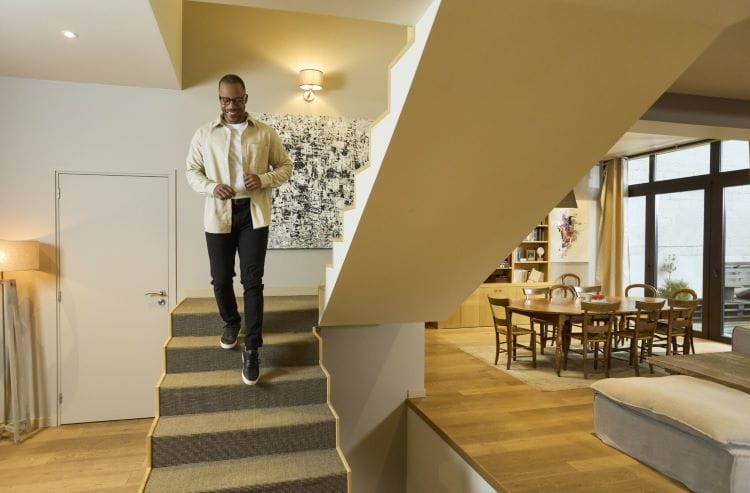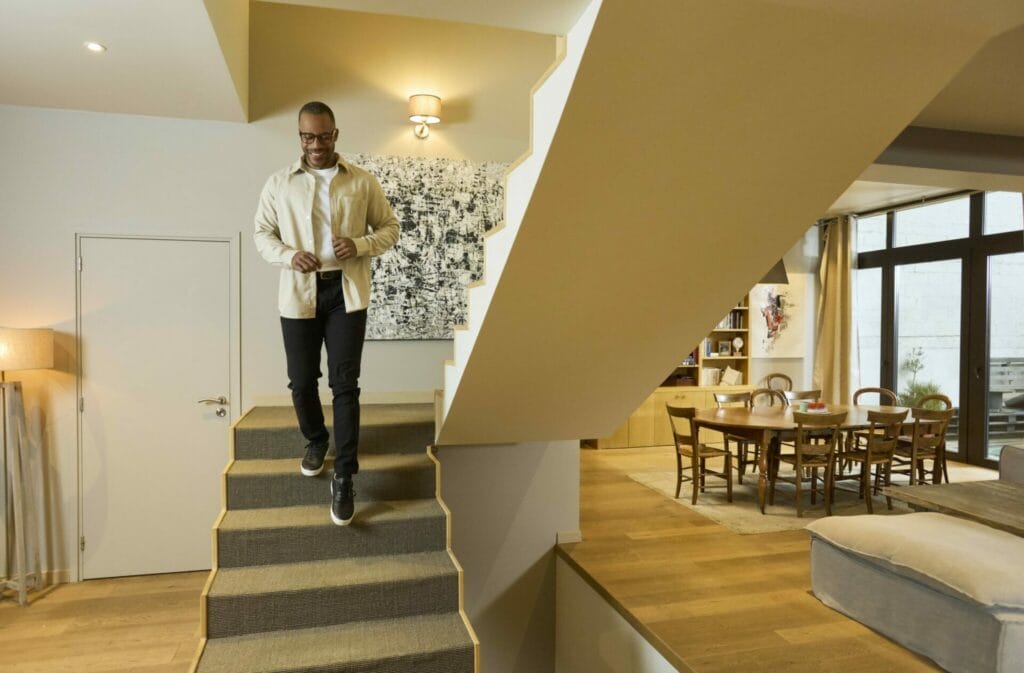sponsored content
November 20, 2023
The story of Varilux goes back 65 years when the inventor Bernard Maitenaz revolutionized the optical industry with the first Varilux progressive lens. For the first time, presbyopes were able to have corrected vision at all distances with one single pair of eyeglasses.
As near vision demands have changed drastically over the last 20 years, so have progressive lens designs. The team at EssilorLuxottica has continued to invest in research and development to bring out innovation and new concepts to keep up with the evolving needs of our modern presbyopes.
The latest generation of Varilux lenses with a new approach is the Varilux XR series lenses, which are the first eye responsive progressive lenses 1 that respect the natural behavior of the eye and provide instant sharpness even in motion,2 powered by behavioral artificial intelligence.
Visual Demands of the Modern Presbyope
As global life expectancy continues to rise, most of our present population will spend roughly half their lives as presbyopes.3
One significant trend is how more people are delaying their retirement and working later in life. According to the U.S. Bureau of Labor Statistics, more than half of the labor force growth from 2021 to 2031 is projected to come from the 65-and-older age group, and the number of people aged 55-64 will increase to almost 42 million in 2024.4
This new generation of individuals are maintaining more active lifestyles and engaging in activities such as going to the theater, cinema, reading, knitting, and learning new skills such as playing musical instruments.5
Modern presbyopes lead demanding lives with visual demands at all distances. We live in an era of information overload, with more digitally connected lives than ever before. It is estimated there will be 125 billion devices by 2030.6 Every day, we receive more than 80 notifications per day,7 so today’s presbyopes are frequently switching from distance vision to near vision.
Approximately 68% of all U.S. adults use Facebook, while over 20% of U.S. adults use Instagram, Pinterest, LinkedIn, and X.8
A recent quantitative study identified some of the main challenges faced by progressive addition lens (PAL) wearers:9
- Checking notifications all day long and quickly switching gaze from smartphone to the environment
- Walking down the stairs and alternating their gaze between the stairs and smartphone
- Using two computer screens and switching gaze from the keyboard to the first screen and then the second screen
The conclusion of this study suggests that it does take time for a PAL wearer to adjust their focus back and forth from these elusive targets and tasks as well as maintaining sharp vision while moving requires additional attention and effort.
Today, with modern lifestyles, it is estimated that our eyes undergo around 100,000 eye movements a day to process all the visual information, and most of this is due to multitasking from near to far. 10
We switch our attention and gaze back and forth between various tasks and from one object to another.
Millennials, born between 1981 and 1996 were the first generation growing up with computers and to see the rise of social media.
The oldest millennials are now starting to turn 42, and eye care practitioners should be mindful that there is an emotional impact for these emerging presbyopes as they have had to accept that their near vision is no longer perfect, and the initial symptoms experienced by these individuals are tired eyes from reading or they may also need to hold objects further away in order to see them clearly.
At this point it is important to remember that there is often no mention of “blurred vision.” 11
The Centers for Disease Control and Prevention (CDC) has data that shows women are having children much later, and we have a lot of first-time mothers who are in their 40s. Imagine the near point visual challenges that are starting to take place with simply basic childcare such as nursing and clipping little fingernails. These presbyopic moms need something that allows them to seamlessly function in the near and in the intermediate ranges. They need to be able to see a wide field of vision. So, the conversation that you will have with these new moms might be different from the discussion you will have with someone who is more of a seasoned presbyope.
Whether your patients want to play pickleball, which is the fastest growing sport in the U.S., according to Forbes HEALTH,12 or check their digital devices, progressive lenses need to allow the navigation of the eyes through the lenses to be easier and more natural when going from one object to another and at the same time provide optimal binocular vision in this highly complex 3D environment.
Many active presbyopes who are constantly on the go need a lens that will keep their vision sharp at all distances, in every situation.
To keep up with these dynamic vision needs, and high-speed processes, we need to advise our patients of the best solutions to improve their visual experience and adapt to their everyday presbyopic needs and lifestyles.
This is among the reasons why we must bring to the market innovation that considers the full spectrum of presbyopic patients. Going back to consumer expectations, offering this lens as an option is a way to distinguish your practice and identify to patients that you are working to provide personalized solutions specifically designed for their needs.
A New Solution to Meet the Needs of our Modern Presbyopes – Varilux XR series
When multitasking and switching our gaze from near to far, efficient ocular navigation is key to shifting attention between these objects and tasks. Perfect binocular coordination and similarity between the images provided by both eyes are crucial. Any small difference between the image quality conveyed to the right and left eye may lead to serious misperceptions of the dynamic world, affecting the binocular navigation via their impact on stereoacuity and distance perception. Several studies provided clear evidence of the relationship between left/right differences in visual acuity and loss in stereovision.13,14 Therefore, ocular navigation and multitasking require good binocular vision, summation, and fusion mechanisms.15,16
The objective of the new XR-motion technology found in the Varilux XR series is to enhance binocular vision and provide the best binocular visual acuity whilst minimizing the difference in image quality between the right and left eye.
XR-motion technology creates a digital twin model of the patient, and this is placed in a 3D environment, reproducing real-life situations to interact with the objects as the patient would do according to their visual behavior profile. Predictive modelling takes into account the following: Visual acuity loss, postural efforts, head movements, eye movements, and gaze behaviors.
This digital twin model is enhanced using behavioral artificial intelligence, leveraging over one million data points collected from real-life wearers. The lenses accurately predict and model eye movements, reducing the disparities between the images produced by the right and left lenses in all directions of gaze.
This process results in better positioning in the near vision zone, optimized sharp binocular vision, and minimized disparities of power and astigmatism to provide instantaneous sharp vision, while patients are in motion or multitasking.
The Varilux XR series offers two designs: Varilux XR design and Varilux XR track.
The Varilux XR design leverages behavioral AI to predict the visual behavior profile. This is calculated from the prescription, distance vision, and addition.
The Varilux XR track offers personalization to the individual patient’s near vision behavior. Varilux XR track lenses are the versions integrating near vision behavior (NVB) measurement, which takes personalization of the lens to the next level. The NVB measurement aims to determine the parameters of the reader’s habitual near vision postural behavior. This measurement is done in the practice by opticians or by practice staff utilizing an Eye-Ruler 2 device, available for purchase.
Final Thoughts – The Right Time with the Right Lenses
The time is now to prescribe a unique lens to meet the unique vision needs of our everyday modern presbyopic patients. With the Varilux XR series, eye care practitioners can be confident in their recommendation, knowing that they have provided the patient with the best solution for their visual needs. This lens has been designed for the wide range of presbyopes as it has been created by leveraging artificial intelligence, and over one million data points have been collected over time to create this one unique lens customized for each individual patient.
Comparative real-life wearers testing reported that Varilux XR series progressive lenses delivered instant sharpness even in motion.2
To better assist you with understanding and recommending Varilux XR series progressive lenses, please log on to Leonardo, EssilorLuxottica’s learning platform where you will find detailed explanations on Varilux XR series progressive lenses and benefits as well as tutorials on how to measure near vision behavior to personalize the lens.
References
1 Eye-responsive defined as the consideration of two parameters in the design of the progressive lens: prescription and visual behaviour
2 Varilux XR series –in-life consumer study -Eurosyn–2022–France (n=73 high-end progressive lens wearers). 66/73 perceived instant sharpness at all distances while in motion.
3 Charman WN. Developments in the correction of presbyopia I: spectacle and contact lenses. Ophthalmic Physiol Opt.2014;34:8—29.
4 US Census Bureau
5 Vilhelmson, B., Thulin, E., & Elldér, E. (2022). Is ageing becoming more active? Exploring cohort-wise changes in everyday time use among the older population in Sweden. European Journal of Ageing, 19(3), 447-461
6 Mintel Global Consumer Trends 2030 – April 2020
7 Acer U, Mashhadi A, Forlivesi C, Kawsar F. Energy Efficient Scheduling for Mobile Push Notifications. EAI Endorsed Transactions on Energy Web. 2015. 2. 10.4108/eai.22-7-2015.2260067
8 Greenwood S, Perrin A, Duggan M. Social media update 2016. Pew Research Center. 2016;11:83. doi: 10.1002/9781119085621.wbefs533
9 Essilor, Varilux XR series Consumer Expectations and Behaviors with Progressive Lenses – Third Independent Party – BR/FR/ IT/UK/US – Q1 2022 (n=4062 progressive lenses wearers
10 Peter H. Schiller, Edward J. Tehovnik, Neural mechanisms underlying target selection with saccadic eye movements, Progress in Brain Research, Elsevier, Volume 149, 2005, Pages 157-171
11 McDonald MB, Barnett M, Gaddie IB. Classification of presbyopia by severity. Ophthalmolo Ther 2021.
12 Kimberley Dawn Newmann October 10th 2023. Forbes HEALTH magazine. What is Pickeball? Benefits, how to play and more.
13 Odell, N.V., Hatt, S.R., Leske, D.A., Adams, W.E., Holmes, J.M. The effect of induced monocular blur on measures of stereoacuity. Journal of American Association for Pediatric Ophthalmology and Strabismus. 2009;13(2):136-141
14 Singh, D., Aggarwal, S., Sachdeva, M.M. Saxena, R. Effect of induced monocular blur on monocular and binocular functions. Indian Journal of Clinical and Experimental
15 OOpoku-Baah C, Wallace MT. Binocular Enhancement of Multisensory Temporal Perception. Invest Ophthalmol Vis Sci. 2021;62(3):7.
16 Ding J , Levi DM. A unified model for binocular fusion and depth perception. Vision Res. 2021;180:11-36. Ophthalmology. 2015;1(4):197-20








